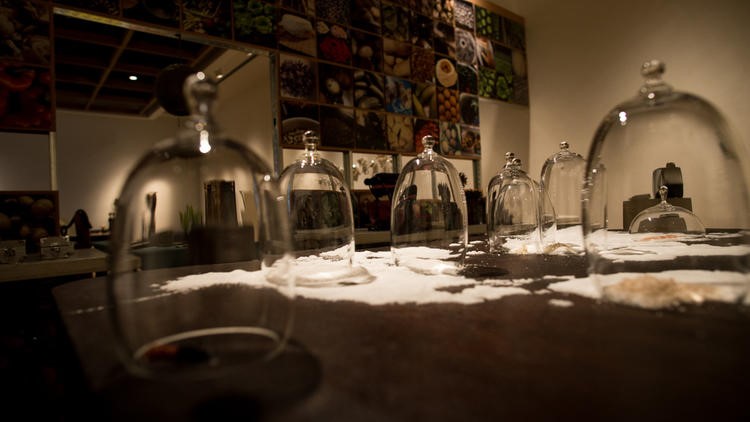Peninsula Fine Arts Center quickly flips exhibits July 1, 2017

Daily Press
Jonathan Black, Contact Reporter
Barely 12 hours after the Peninsula Fine Arts Center wrapped up “Soaring: Works From NASA’s Art Program,” little trace of the exhibit remained at the Newport News museum.
On a Monday afternoon PFAC’s walls were bare, hallways were filled with crates and the sound of drills echoed through the museum to prep for the next exhibit, “Dream House Remix.”
With only a nine-day period between “Soaring” closing and “Dream House” opening, staff and volunteers weren’t wasting a minute.
“It is a little bit hectic,” said curator Diana Blanchard Gross.
By the end of the first day, most outgoing exhibit items either have been stored, picked up by the artist or are being prepped for shipment.
In the case of NASA, some exhibits were given back to the Langley facility in Hampton, while others were being sealed in crates to ship to Florida.
Blanchard Gross said she generally takes a photo of everything inside a container when it arrives at PFAC to properly remember how items are stored. Everything is organized into three groups: left, center or right.
Generally, the largest items are removed first before moving onto the pieces hanging on the walls and around the periphery. In this two-week gap, it was doubly important as PFAC had an architect and crew building a wall in its main gallery into different rooms for the whimsical Dream House, which returns to PFAC after 25 years.
Steel beams for the temporary wall were installed by early Monday afternoon.
“The galleries of the arts center will be transformed into different rooms of the home,” Blanchard Gross said.
About 50 artists are submitting works to “Dream House.” One of them, Richmond-based Pam Southerland, installed her pieces Monday. She hung her work in a corner of the back gallery, which was a blank slate when she arrived about 10 a.m.
“The entire piece is about an arrangement,” she said. “I didn’t know what was going to happen until I got here.”
Southerland’s appearance is an exception to the general set-up process, according to Blanchard Gross. Most artists either send their work to the museum or have PFAC pick it up for the curator to organize how she sees fit. In some cases, that can mean a multiday journey for Fred Rich, exhibitions and operations manager.
Rather than pay for art shipment, PFAC will send its staff to collect exhibition materials. Generally that means traveling to Richmond or Northern Virginia. Once, it meant a two-day road trip to Michigan to collect pieces in a climate-controlled truck.
“It’s so expensive to ship,” Rich said. “We’d rather load it up ourselves and bring it here with nothing happening.”
Blanchard Gross plans about a year in advance with kid-friendly exhibits in the winter, when schools are visiting the museum most often, and a blockbuster exhibit in the summer. She doesn’t decide where to install pieces until they’ve arrived at the museum. Organization can depend on if the exhibit has a naturally chronological order to it or if there’s a natural theme. If there’s nothing else connecting the pieces, the curator settles on what goes best aesthetically.
“A lot of things are done spur of the moment. Normally once all the work is here, it doesn’t take me long to arrange things,” Blanchard Gross said. “They just leave me alone and I contemplate the pieces.”
For the actual installation, only a few people are trusted at PFAC. Generally its Blanchard Gross, Rich, a couple volunteers and an intern.
“I’d rather just a few of us handle it than a whole mess of us. Then there’s too many hands in the pot,” Blanchard Ross said. “We try to have fun and make it interesting.”
Every painting is hung with two hooks, for good measure, and generally lit using foot-candles, a measurement of light intensity defined by the illumination on a one square foot surface. Rich lights work on paper with 6-foot candles and oil paintings with 10. As for using vitrines, the glass display case protecting art from fingertips, it’s usually a judgment call on when to use them.
PFAC keeps its temperature set at 70 degrees with 50 percent humidity year-round for further preservation.
“There is generally a flow to the exhibitions,” Blanchard Gross said. “There’s always kind of a connection.”
